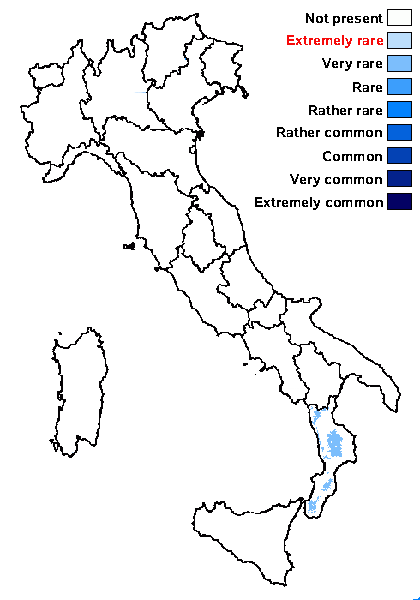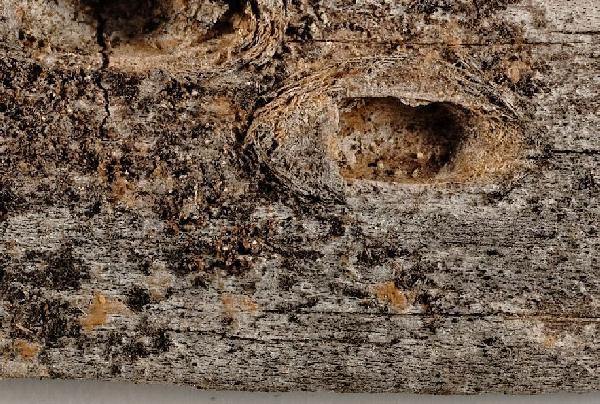Micarea perparvula (Nyl.) Coppins & Printzen
in Printzen, Bibl. Lichenol., 60: 204, 1995.. Basionym: Lecidea perparvula Nyl. - Flora, 64, 34: 532, 1881.
Synonyms:
Distribution: S - Cal (Malíček & al. 2018).
Description: Thallus crustose, endosubstratic, inapparent, the hyphal walls sometimes olivaceous and K+ violet. Apothecia micareoid, sessile, black, convex-hemispherical to subglobose, (0.08-)0.12-0.2 mm across, without a proper margin. Proper exciple inapparent; epithecium dark brown, 7-9 μm high, N-, K-, but the brown pigment partly dissolving, revealing some faintly K+ violet areas; hymenium dilute brown, especially in upper part, 35-40 μm high, N-, the pigment dissolving in K; paraphyses scanty, (0.5-)0.8-1 μm thick, the apical cells sometimes up to 1.3 μm wide; hypothecium pale brown, N-, K-. Asci 8-spored, clavate to cylindrical-clavate, in K/I with a blue outer layer and apical dome and unstained wall, the dome with an apical cushion. Ascospores 1-celled to rarely a few 1-septate, hyaline, ellipsoid, ovoid-ellipsoid or oblong-ellipsoid, 6.7-9.8 x 2.5-4 μm. Pycnidia partly immersed, black, c. 40 μm across, the wall olivaceous green, K+ violet. Conidia bacilliform, 3.8-4.5 x 0.7-1 μm. Photobiont micareoid, the cells 4-7 μm wide. Spot tests: thallus K- or K+ faintly violet, C-, KC-, P-, UV-. Chemistry: thallus, pycnidial walls and epithecium with the Sedifolia-grey pigment; epithecium with the Elachista-brown pigment.Note: a poorly known, inconspicuous species of acid bark and wood in rather humid-shaded situations.
Growth form: Crustose
Substrata: bark and lignum
Photobiont: green algae other than Trentepohlia
Reproductive strategy: mainly sexual
Commonnes-rarity: (info)
Alpine belt: absent
Subalpine belt: absent
Oromediterranean belt: absent
Montane belt: very rare
Submediterranean belt: absent
Padanian area: absent
Humid submediterranean belt: absent
Humid mediterranean belt: absent
Dry mediterranean belt: absent

Predictive model
Growth form: Crustose
Substrata: bark and lignum
Photobiont: green algae other than Trentepohlia
Reproductive strategy: mainly sexual
Commonnes-rarity: (info)
Alpine belt: absent
Subalpine belt: absent
Oromediterranean belt: absent
Montane belt: very rare
Submediterranean belt: absent
Padanian area: absent
Humid submediterranean belt: absent
Humid mediterranean belt: absent
Dry mediterranean belt: absent

Predictive model
 INDEX FUNGORUM
INDEX FUNGORUM
 GBIF
GBIF


